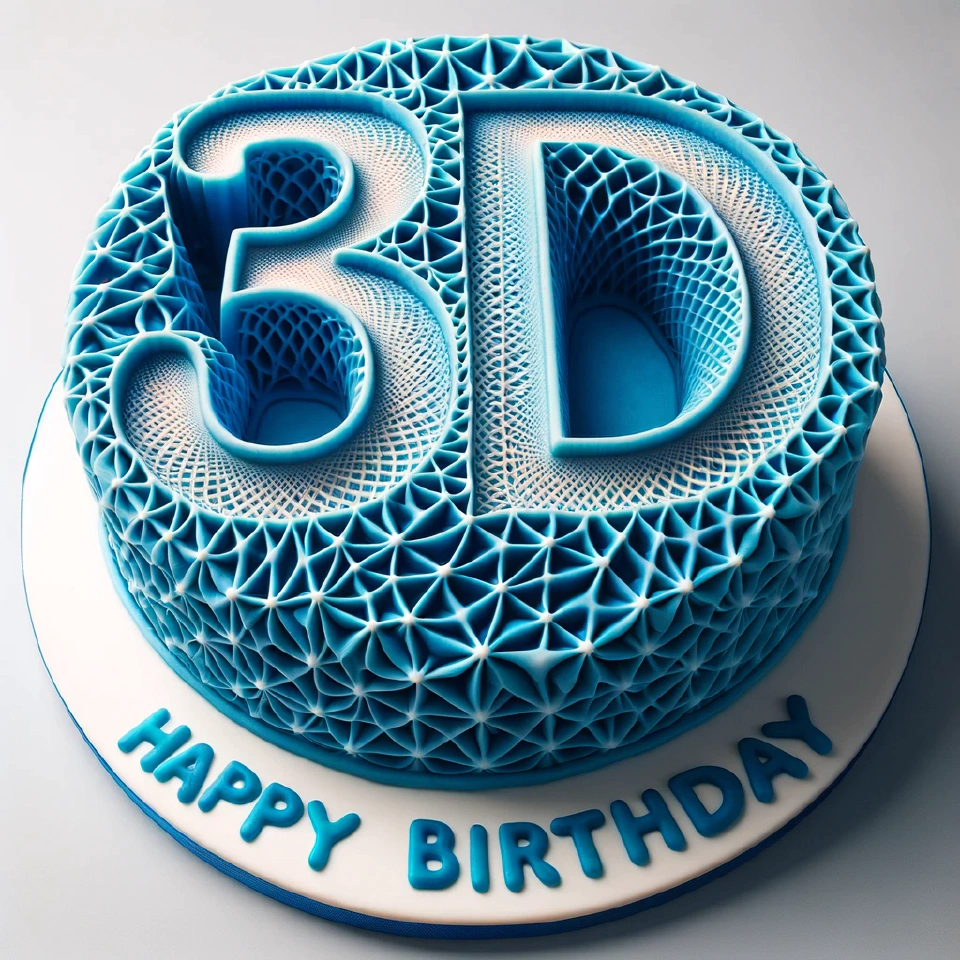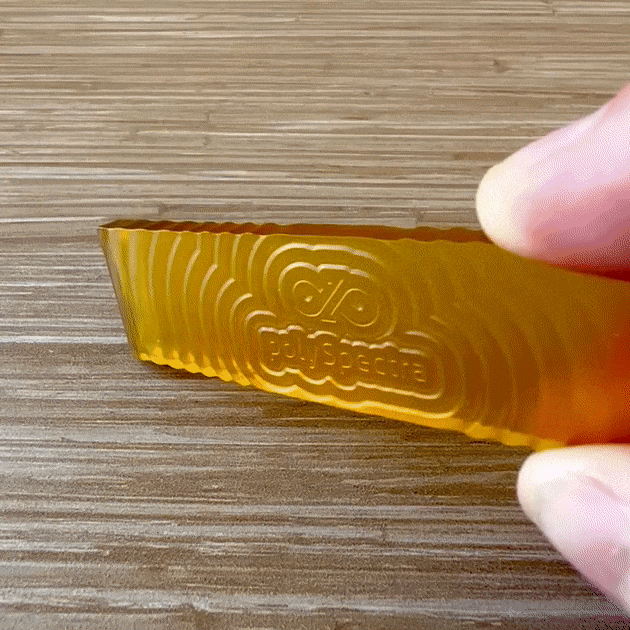Seven reflections to commemorate seven years of polySpectra.
1. Make it real.
The founding mantra of polySpectra was and still is “make it real”. We set out to make real the beautiful future of democratized manufacturing that had been promised in the desktop 3D printer craze of ten years ago.
There are two sides of “make it real” - one dark and one light. The dark side of “make it real” is that it doesn’t matter how many times you shout “production”. The reality is that — outside of dental and aerospace — prototypes, tooling and toys still make all of the money. The light side of “make it real” is the vision of accelerating innovation, of helping engineers and innovators manifest their ideas quickly, sustainably, and affordably.
2. The difference between production and prototyping is materials performance.
The founding thesis of the company was that no one needs crap fast, no one needs higher throughput, lower costs, or larger build envelopes for printed parts that they cannot trust to do the job. The corollary of this is that the exact same hardware instantly changes from being a prototyping toy to a production tool when it can output components with the materials performance required for the job.
The consequence of this is that as soon as a new real additive manufacturing application is unlocked, there is very quickly a diverse ecosystem that sprouts up to support this new application. The niches in this ecosystem include hardware, software, and services with different price points and different business models. The thesis of polySpectra is that while the hardware and software and services aspects of the ecosystem are critical to delivering the end solution, the biggest lever in terms of expanding the total addressable market is materials chemistry.
3. We bet on open innovation.
Maybe we were biased by our proximity to Henry Chesbrough at the Haas Business School, my personal obsession with the question of “why are there no open source chemistry companies?", or the amazing ecosystem that was galvanized by the launch of the Autodesk Ember (RIP). Even though it’s hard to point to one specific reason, the fact of the matter is that we bet that as 3D printing moved from prototyping to production, there would be a necessary shift from full stack walled gardens and DRM chip tags to an open ecosystem of hardware, software, materials, and services.
The analogy that we would always make is that if you spend a few million dollars on an injection molding press, the company that sold it to you is not going to tell you that now it won’t turn on unless you buy their specific brand of thermoplastic pellets. No company, no matter how large, can be well-positioned to service the needs of all of the different manufacturers. This was highly criticized at the time, in particular by many investors who felt that because all of the examples that they had seen in 3D printing were “full stack” companies, that the only way that you could make money in this space was doing everything yourself.
It has been incredibly exciting and rewarding to see the industry shift in the direction of open innovation. I’m glad that I no longer need to debate the merits of this particular point. The largest chemical companies in the world have set themselves up with a similar business model to ours, as material suppliers who collaborate broadly with many printer OEMs. In the other direction, there are literally thousands of 3D printer companies, large and small, that openly welcome third party materials onto their platforms.
For me personally, the most rewarding consequence of this diverse ecosystem is that polySpectra can help customers who have spent $300 on their resin 3D printer, as well as customers who have spent $300,000 on their resin 3D printer (…and all of the really amazing resin printers in between!)
4. It takes courage to try something new.
There’s a risk that it might not work. There is the fear that you might be hoodwinked. The biggest challenge in the history of the 3D printing industry has been false promises.
This is true in every new high tech industry, and is in many ways an inevitable aspect of moving from the bleeding edge to the cutting edge to the early adopters and eventually across the chasm. The challenge in our industry is that the detritus of shattered dreams takes the form of unutilized printer capacity, piles and piles of parts that don’t meet spec, and really expensive paperweights once engineers give up on their 3D printer.
Frankly speaking, the additive manufacturing industry is traumatized. We need to rebuild trust slowly, with small steps, proof points, clear expectations, and interpersonal generosity.
5. It takes a village.
As I mentioned above, no one can do it alone. Not even with a trillion dollars could one company service the $11 trillion global manufacturing sector with competitive additive manufacturing solutions.
I’m incredibly proud of our team at polySpectra, past and present, and I could brag about my team all day. But the reality of the situation is that we would never have gotten to where we are today without a really broad spectrum of partners and friends.
The list is too long to mention everyone today, but I would like to take this opportunity to thank our suppliers, investors, partners, customers, as well as every United States taxpayer. (You are our angel investor).
6. What can’t you do with Ray’s Magic Goo?
The existential challenge of 3D printing is this: supposedly you can use it for everything, but when you look a bit closer, you start to question whether or not you can actually use it for any one thing.
On top of this, new materials are definitely in the category of platform technologies. While it’s easy to guess and draw comparisons and parallels to other families of materials, when you have invented a fundamentally new category of material for your industry (COR), it simply takes time to figure out what the useful applications are.
When I first started thinking about the consequences of the application of my photo-ROMP invention to 3D printing, I was very excited personally about the idea that if we could get this to work, you would never need a mold ever again. You would just print what you want, in the shape that you want it, with the properties that you want — all in one step. At the time I was calling this functional lithography.
The ultimate irony of this founding vision is that once we made contact with the reality of the market, the strongest responses that we got when we showed people the COR Alpha spec sheet was, “Wow, that would make an amazing mold!".
This process of customer discovery was incredibly humbling. Of course, Steve Blank buckled over laughing when I told him this story (because he was not surprised one bit). While everyone in 3D printing is jumping up and down shouting “production, production, production”, the reality is that Additive Tooling is a very real market with very real limitations and very large problems that can be solved with more durable materials. By sales, Rapid Tooling is single-handedly the largest application to date for COR Alpha.
While I personally remain energized by the vision of an engineer going straight from CAD to a production end use component in a single print, it has been an incredible amount of fun to work with the largest companies in the world, solving fundamental challenges towards making better 3D printed molds.
Other than tooling, seven years later, what can you do with Ray’s Magic Goo?
We have customers using COR for a wide range of applications. Gears, impellers, enclosures, low-loss dielectrics for 5G applications, snap fit electrical connectors, podiatry inserts, medical device components including fluidics, manifolds, valves, and microfluidics, motorcycle parts, car parts, drone parts, robotic end-effectors, wheels, shells for power tools, dental products, musical instrument components - too many for me to remember, our customers are too creative!
7. What do the next seven years look like for polySpectra and resin 3D printing?
For 3D printing more broadly, in terms of the Gartner Hype cycle, additive manufacturing is undeniably clawing its way up the slow slope of enlightenment. You still can’t believe every press release. You still won’t want to live in a 3D-printed house in seven years. I doubt that in seven years I will feel comfortable accepting any 3D-printed organs into my body.
But what is happening every single day is that an innovative engineer is finding yet another opportunity to leverage the speed, design freedom, agility, and sustainability benefits of 3D printing to make their idea real.
I don’t think it’s smart for me to predict the specific wins. (Above, you can see how horribly wrong I was to dismiss 3D printed molds so quickly.) However, I am incredibly energized by the thought of coming to work every day for the next seven years to collaborate with innovative engineers to make it real, one idea at a time.
Thank you for your support over the last seven years and here’s to the next seven!
Make it real.
Raymond












